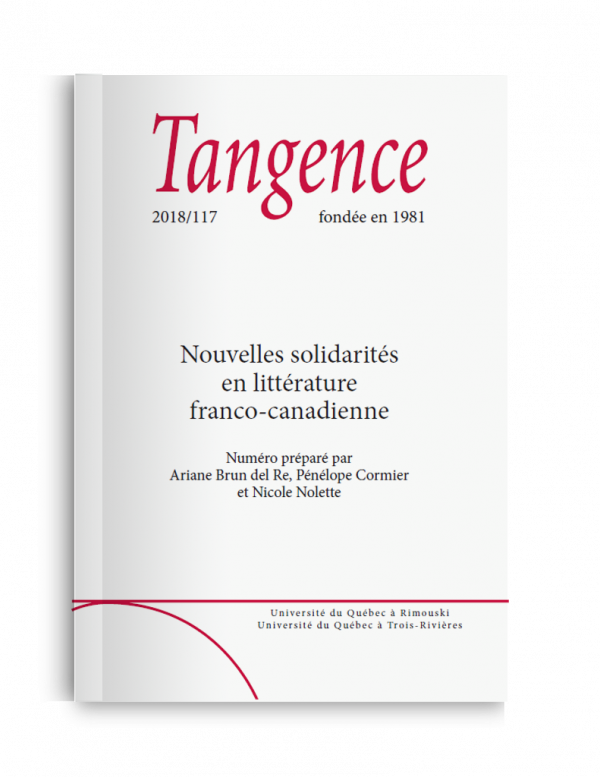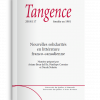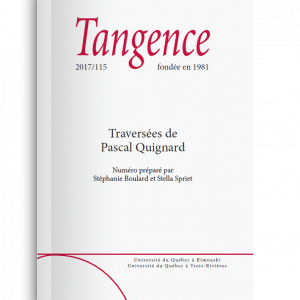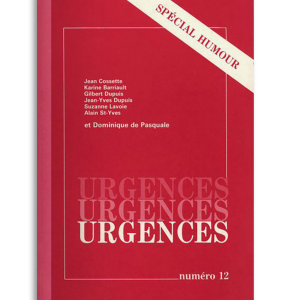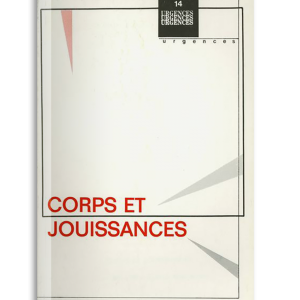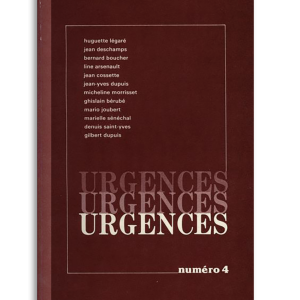Functions of the literary festival in minority French-Canadian cultural spaces
François Paré
Our study focuses on the phenomenon of literary festivals (as distinguished from book fairs) since the mid-1990s and their function in minority French-speaking communities in Canada. After a brief look at the history of the literary festival in North America, the analysis turns to a discussion of two festival events in French Canada, which are significant for their impact, their symbolic value and their relative longevity : the Festival acadien de poésie (Caraquet, New Brunswick) and Thin Air/Livres en fête (Winnipeg, Manitoba). These two festivals are seen to fluctuate between a concern for institutional and linguistic autonomy and, in the absence of a large enough public, the necessity for negotiating a place, even marginal, within the programming of English-Canadian literary festivals. Finally, we propose a theoretical reflection on the identitary function of the literary festival in peripheral cultures, that is, one that affirms the vitality of the minority community via the writer’s performative voice and ensures the intergenerational transmission of literary heritage.
Draw on me : minority bilingualism and French-Canadian literary relays
Catherine Leclerc
After being fragmented following the nationalization of Quebec literature, the French-Canadian literary space seems to be rebuilding itself on new foundations. The present article examines this phenomenon via two characteristics shared by Canada’s Frenchspeaking minorities – bilingualism and minoritization –, the very ones discarded in Quebec during the creation of its national culture. Today, however, they are being given new value. This is because transformations in the French-Canadian literary space now coincide with those in linguistic ideologies regarding the contact between French and English. Whereas Quebec had used minority bilingualism as a foil, bilingualism is currently gaining status to the point of serving as a model. The result is a rearrangement of 1) the hierarchical relations between—and even within—each of the various French-Canadian literary spaces and 2) new intertextual relays. The present article retraces this rearrangement through a discussion of certain key heterolingual French-Canadian texts of recent decades and their reception.
A 3D theatre in the Canadian West
Nicole Nolette
In this article, Nicole Nolette explores the potential of the concept of “supportive differentiation” for the intertextual analysis of the French-language literatures of Ontario and Western Canada. The “three D’s” of French-speaking Ontario (Patrice Desbiens, Robert Dickson and Jean Marc Dalpé), rejected by the generation of Louis Patrick Leroux, reappear in the dramatic work of Marc Prescott in Manitoba and Gilles Poulin-Denis, a native of Saskatchewan. Nicole Nolette identifies the traces of the three D’s in the language, highway, mining town and animals represented by Prescott and Poulin-Denis to demonstrate how the literary solidarity of French-speaking communities in western Canada and Ontario can also indicate regional differentiation.
Living in the city : the urban house in French-Canadian fiction
Ariane Brun del Re
In 2011, Jean Morency highlighted the recurrence of a particular spatial figure in the literatures of Acadia, French Ontario and Frenchspeaking Western Canada : the burned house, which he associated with time, memory and history. Since then, French-Canadian writers have abandoned this figure in favour of another type of lodging : the urban house. Such is the case for Daniel Poliquin, Simone Chaput and France Daigle among others. What the atypical houses of La Côte de Sable (1990, under the title Visions de Jude), La belle ordure (2010) and Petites difficultés d’existence (2002) and its sequel Pour sûr (2011) have in common are spaces that are not very conducive to privacy because they blur the boundaries between indoors and out. Meeting points for the characters, these houses have far greater importance than the cities where the story takes place. French-Canadian writers thus appear to have used the urban house as a means of appropriating the city and thereby inhabiting it. The recurrence of this new spatial figure and the shift from the burned house to the urban house suggest that French-Canadian writers draw from a common wellspring of ideas. French-Canadian literature could thus rely on a shared imagination as well as shared institutions.
Mother sickness : female solidarity in the work of Marguerite Andersen and Hélène Harbec
Benoit Doyon-Gosselin and Maria Cristina Greco
Despite their quantitative and qualitative importance, the works of Franco-Ontarian Marguerite Andersen and New Brunswick native Hélène Harbec have attracted very little attention from researchers. This may be because their creative texts fall within a highly decontextualized context and their point of departure (Germany for Andersen and Quebec for Harbec) make them “strangers” relative to their respective national corpus. However, the works of Andersen and Harbec clearly reflect similar formal themes of rapprochement. Subsequent to the work of Lori Saint-Martin and Béatrice Didier, this article aims to study the protagonist-writers’ relationship to the mother and to their own role as mother and examine how these relationships serve as an engine of creation. The work of both authors proposes a new women’s solidarity that becomes a lifestyle model. We seek to highlight the issue of the mother-child relationship as well as the particular characteristics of writing by women who are explicitly guided by the tutelary figure of Virginia Woolf. The body of work retained includes the following : De mémoire de femme ([1982] 2002), Le cahier des absences et de la décision ([1991] 2009), L’orgueilleuse (1998) and La mauvaise mère (2013).
The Asian Other in Gabrielle Roy, Marguerite-A. Primeau, J.R. Léveillé and Annie-Claude Thériault
Pamela Sing
French-Canadian communities acknowledge, at least in discussion, the need to form new intercultural solidarities and integrate new knowledge, new perspectives and attitudes and new tastes ; we may well wonder, however, what “Others” populate the imagination of their literary artists. Given the importance, for French-language literature in Canada, of the work of Asian-born writers including, for example, Ying Chen, Kim Thúy, Ook Chung and Aki Shimazaki, this article examines perceptions of the Asian in authors from Frenchspeaking communities west of Quebec. To determine to what extent the Asian immigrant or emigrant can be included within the chapter of the new solidarities imagined within French-speaking Canada, this article focuses on four texts : Où iras-tu Sam Lee Wong ? by Gabrielle Roy, Une veille de Noël by Marguerite-A. Primeau, Le soleil du lac qui se couche by J.R. Léveillé and Quelque chose comme une odeur de printemps by Annie-Claude Thériault.

